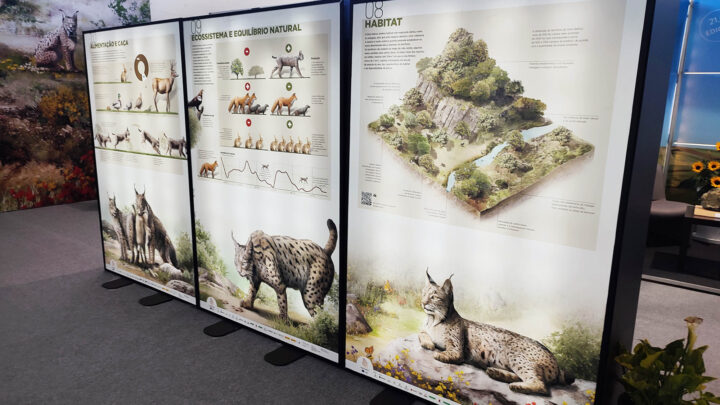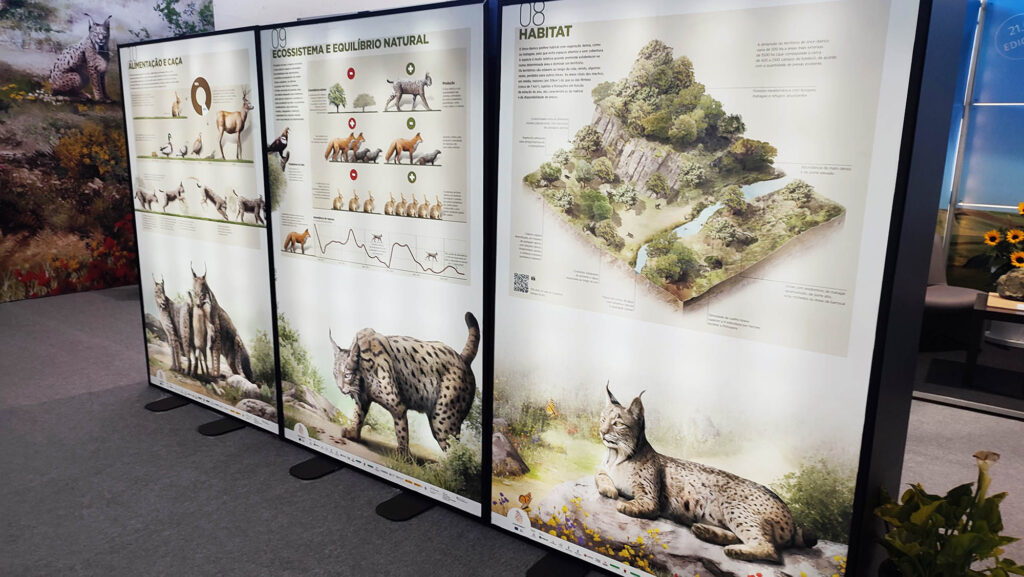The exhibition “The Lynx on the Peninsula – Connecting territories and consolidating populations” will be on display at the Consulate General of Portugal, in Seville, with the opening scheduled for this Wednesday, May 31, at 20:45.
After being featured at Ovibeja, the exhibition developed by CIMBAL, a partner in the project LIFE Lynxconnect, with the technical and scientific support of the Institute for the Conservation of Nature and Forests (ICNF) in editing the contents, will be available at that location until June 5th.
The exhibition aims to make society in Spain and Portugal aware of the work done, in progress and that will be done in the near future, within the scope of the conservation of the Iberian Lynx, with its itinerancy being foreseen for the 13 municipalities that make up CIMBAL – Comunidade Intermunicipal of Baixo Alentejo, for three municipalities in the Algarve (Alcoutim, Tavira and Silves) and also for Lisbon.
The inaugural session will be attended by the Consul of Portugal in Seville, representatives of the Central Government of Spain, and the Consejería de Sostenibilidad, Medio Ambiente y Economia Azul of the Junta de Andalucía, ICNF and CIMBAL, and the director and other LIFE Lynxconnect project.
The Iberian lynx census in the Peninsula for 2022, recently made public, identified 1 specimens in freedom in the Iberian Peninsula.
This census was carried out jointly by the nature conservation authorities of Portugal (ICNF) and Spain (Consejería de Sostenibilidad, Medio Ambiente y Economia Azul, of the Junta de Andalucía, Consejería de Desarrollo Sostenible, of the Junta de Castilla-La Mancha, Consejería for the Ecological Transition and Sustainability of the Junta de Extremadura and Consejería de Medio Ambiente, Mar Menor, Universities and Research of the Community of Murcia).
In view of these numbers, the ICNF points out that the evolution of the species «is being positive, with the lynx having passed from the level of “critically endangered” to “endangered”».
However, «in order to achieve the objective of making the Iberian lynx population self-sustaining between 2035 and 2040, reaching an Iberian population of between 700 and 750 breeding females out of a total of 3 specimens, it is necessary to continue the conservation work on the ground and in breeding centres, and also the effort to communicate with the public about what was done, why and how it was done and what will continue to be done in order to remove the Iberian lynx from the list of endangered species».
«The collaboration and political, administrative, technical and scientific articulation developed jointly between Portugal and Spain, since 2004, which allowed the surpassing of one and a half thousand specimens of Iberian lynx in freedom by 2022, would not have the success widely recognized in terms of world, if it had not been preceded and accompanied by a strong awareness and involvement of the population, local authorities and society in general, including the media», concludes the ICNF.




















Comments